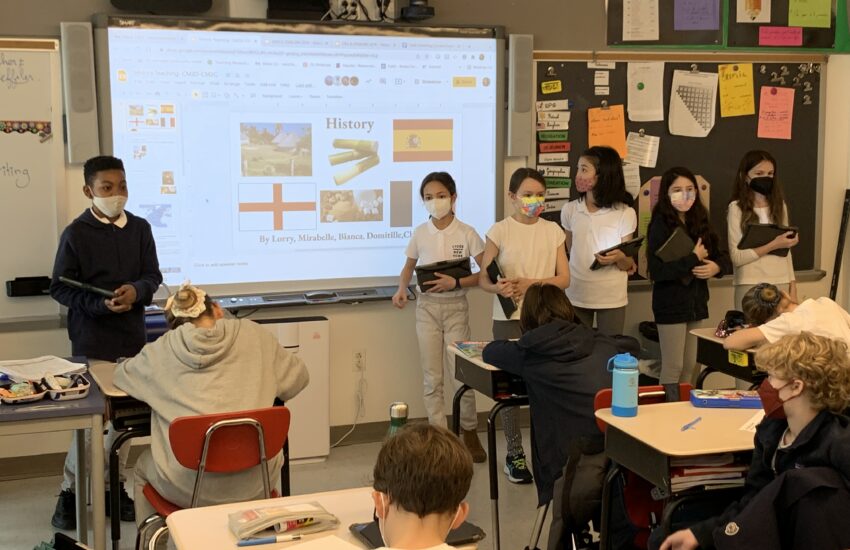Fifth-grade history at the Lycée begins with the United States Constitution. This year, I wanted to find a high-interest entry point into the topic that would take my students through some difficult moments in history. My goal was to help them make meaningful connections in the historical topics they were studying and to fill in the blanks with lesser known history that is nonetheless essential to understanding the past and the present. I chose the complicated history of sugar and its relationship to slavery.
Providing Context
Difficult history, such as the institution of slavery, is a topic that requires ample context in order for students to develop accurate understandings of the complexities, that if not well-understood, could perpetuate misunderstandings. Reputable, carefully curated primary and secondary resources are needed to set a strong foundation for this important instruction. Up-to-date information from respected historians via institutions such as Gilder Lehrman, the Library of Congress, Learning for Justice, and the Smithsonian Institute provide resources with the context necessary for effective instruction and learning.
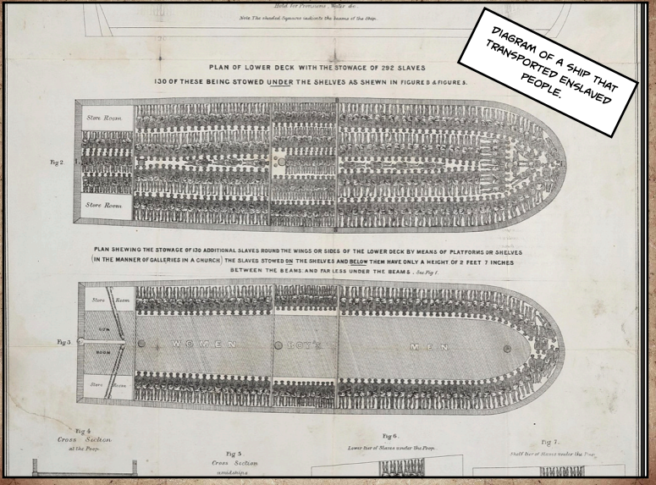
Fostering Classroom Culture
A classroom culture that creates a safe space where students can grapple with complicated concepts and difficult events is a critical foundation to any learning experience, especially when dealing with topics that can incite emotion. A level of maturity needs to be present. The teacher must set the tone with the students, with clear expectations and collaboration based on trust and respect, to allow the class to dig deep, make meaningful connections, and evolve.
Building Connections
This history of the world is interconnected, of course. In our bicultural context at the Lycée, we can leverage these connections in genuine ways for our students.
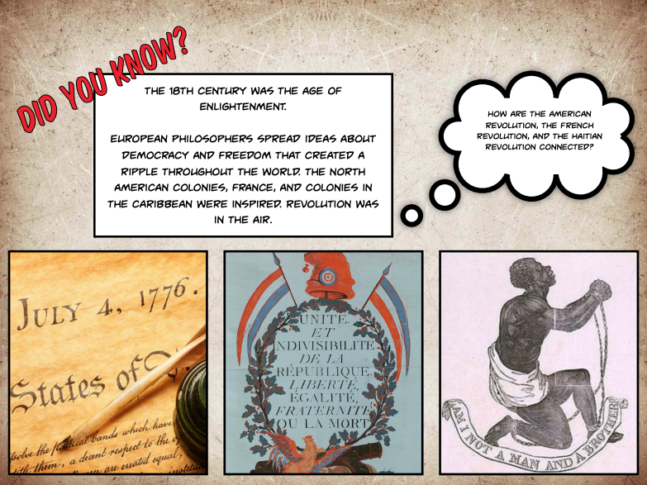
For my CM2 students, the history of sugar provides a seamless narrative that connects France and America across the 17th, 18th, and 19th Centuries. While studying the history of the sugar trade with me in English class, students shared what they had already learned in French history about two key players in the sugar empire: Louis XIV and Napoleon. From this foundation, they were able to construct new understandings of a complex period in human history.
Placing Students in the Lead
Six students from the class volunteered to create a lesson on the sugar trade for another fifth-grade class. Giving students the opportunity to teach the subject helps them to hone their knowledge and skills. They took on the role of teachers and discussion leaders, using the same instructional techniques from our class to engage their peers in a history lesson. Once the lesson was created, their entire class gave constructive feedback and suggestions for revision.
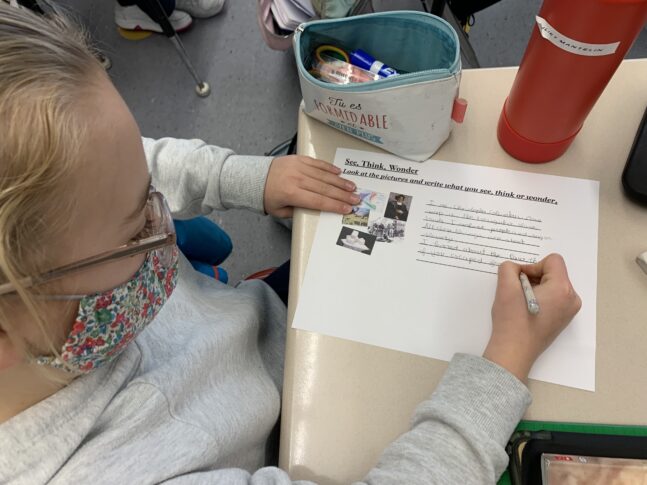
Students began their lesson with an historical image to provoke thinking and discussion. They then asked this driving question of the entire lesson as a way to help their classmates understand what they would be learning and be able to answer by the end:
What is the connection between sugar and slavery?
An engaging class discussion ensued, with student teachers, and their classmates, weaving together their prior knowledge of French and American history to make logical connections and respond to the question afterwards in a lively class discussion.
Collaborative Work on A Final Project
As a final product to share with the community, my entire fifth-grade class (CM2D) has co-written a book entitled, History Remastered. In small groups, they worked on individual chapters, with students taking on the role of writer, illustrator, historian, and fact checker, using supplemental documents to support the information in the topic. The project began in January and the work continued through June.
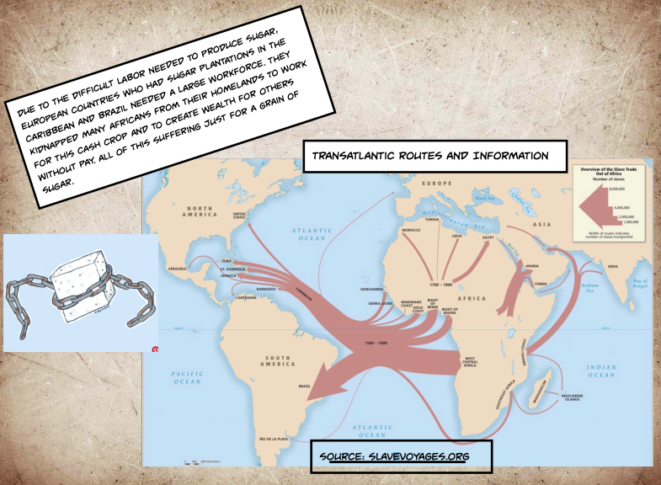
Here’s the introduction:
“The values of liberty and equality, among others, were established in the Declaration of Independence and the Déclaration des droits de l’homme at the birth of each respective republic. These values guide America and France to live up to promised ideals.
Not all citizens were granted the same rights as others since the founding of the United States. America’s continued development towards a “more perfect union” is the legacy of those who fought for their rights despite, according to Frederick Douglass, a “tangled network of contradictions.” The hard history of slavery in America is at the center of the narrative, as well as the fight for freedom that was a driving force in defining who we would become as a nation post-civil war.
History Remastered provides a narrative explaining the road to the abolition of slavery in America that aims to shift the focus of emancipation onto those who emancipated themselves. The legacy of the people who resisted and revolted in the name of freedom lies in the future they paved for their descendants.
The story begins with the history of sugar, and its role in fueling the transatlantic slave trade. During the Age of Revolution in the 1700s, we zoom in on Haiti’s successful revolt for freedom and detail other uprisings that proved slavery an unsustainable, inhumane practice. The dots continue to connect to the purchase of the Louisiana Territory, westward expansion, the displacement of native nations, and the tensions related to the expansion of slavery. All of these dots eventually lead to the Civil War and the end of Slavery.”
View the book and learn more !
About the Author :
Carolyn O’Brien has been a Primary English teacher at the Lycée Français de New York since 2008. She holds a Masters of Science in Childhood Education. Carolyn is the Academic Support Coordinator for the Elementary English Department and teaches 1st and 5th grade. In 2015 and 2016, she received grants from the Lycée to research and implement best practices in metacognitive skill instruction in bi-literacy development and continues to provide professional development in this area. She is an active committee member and dedicated to the Lycée’s mission.

